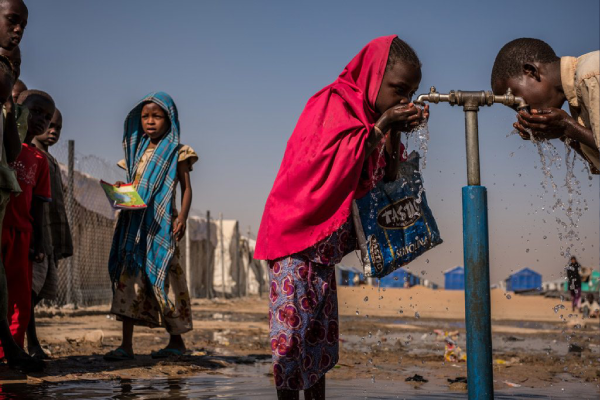The World Health Organization has raised fresh concerns about global access to water, sanitation, and hygiene.
A new report shows that billions of people are still deprived of these basic human rights, with women and girls bearing the greatest burden.
The World Health Organization (WHO) has warned that billions of people worldwide still lack access to safe water, sanitation, and hygiene despite global progress.
A new WHO report reveals that:
•2.1 billion people lack safely managed drinking water.
•1.7 billion lack basic hygiene services at home.
•3.4 billion are without safely managed sanitation.
The report also found that 106 million people rely directly on untreated surface water. Rural communities remain the most disadvantaged compared to urban areas, though urban coverage for hygiene and drinking water has stagnated.
The WHO stressed that women and girls bear the greatest burden, often responsible for water collection, which limits education, work, and social participation. They also face inequalities in menstrual health, affecting school attendance and daily activities.
Calling for urgent action, WHO’s Dr. Ruediger Krech said: “Water, sanitation and hygiene are not privileges, they are basic human rights.”
new WHO report
•2.1 billion people lack safely managed drinking water.
•1.7 billion lack basic hygiene services at home.
Read Also
•3.4 billion are without safely managed sanitation.
Progress has been made in terms of improving sanitation and hygiene worldwide, but 2.1 billion people globally still lack access to safe drinking water.
1.7 billion people still lack basic hygiene services at home. 2.1 billion lack access to safely managed drinking water. And 3.4 billion people worldwide lack safely managed sanitation.
These are some of the findings of a new report released by the World Health Organisation on Tuesday.
The document assembled data on the state of hygiene, access to safely managed sanitation and menstrual health for women and girls from around the world.
Globally, rural areas lag behind urban centres, where sanitation is generally more developed, although coverage for hygiene and drinking water has stagnated in cities around the world.
The report also highlighted that 106 million people drink directly from untreated surface sources of water.
Where water infrastructure is lacking, women and girls are primarily responsible for collecting water, according to the available data, which means that they spend less time on other activities. They also face inequalities relating to menstrual health, as menstruation in many countries means that they are less likely to participate in activities such as school, work, and socialising.
The WHO called for accelerated action on these issues, especially for the most marginalised communities.
According to UNICEF, despite progress over the last decade, billions of people around the world still lack access to essential water, sanitation, and hygiene services, putting them at risk of disease and deeper social exclusion.
A new report: Progress on Household Drinking Water and Sanitation 2000–2024: special focus on inequalities – launched by WHO and UNICEF during World Water Week 2025 – reveals that, while some progress has been made, major gaps persist.
People living in low-income countries, fragile contexts, rural communities, children, and minority ethnic and indigenous groups face the greatest disparities.





